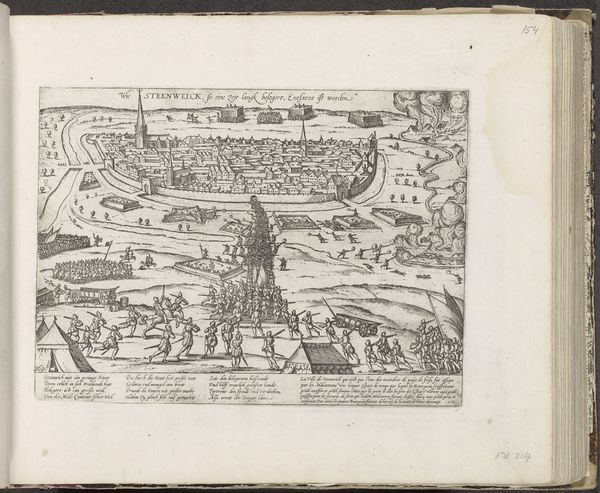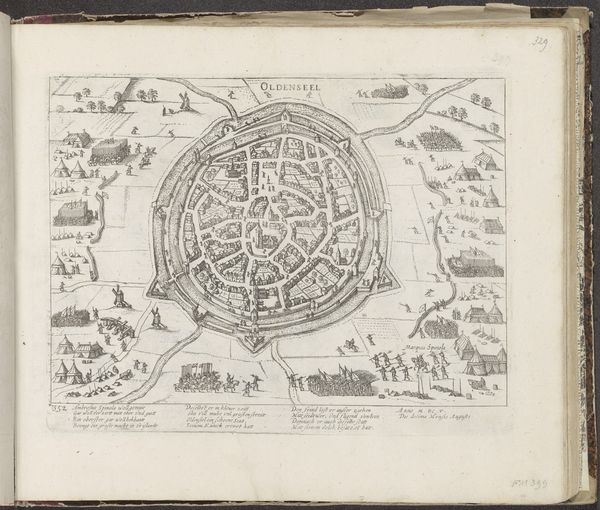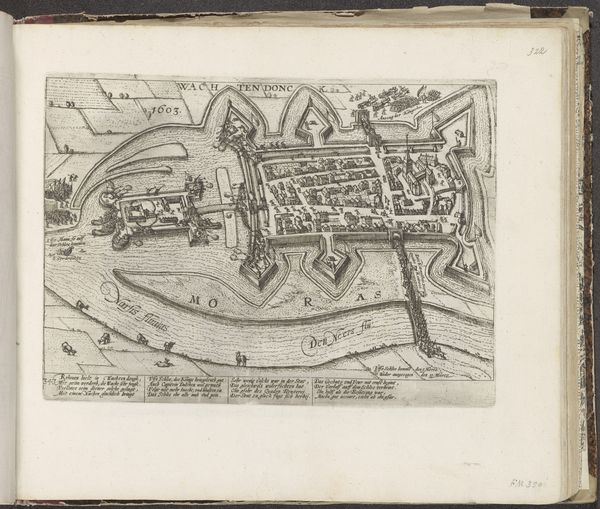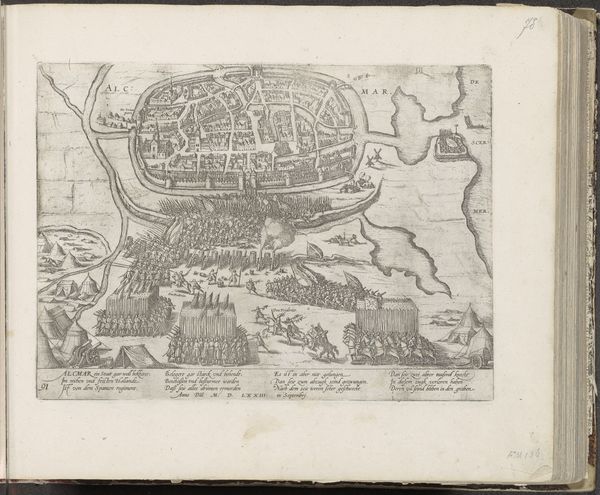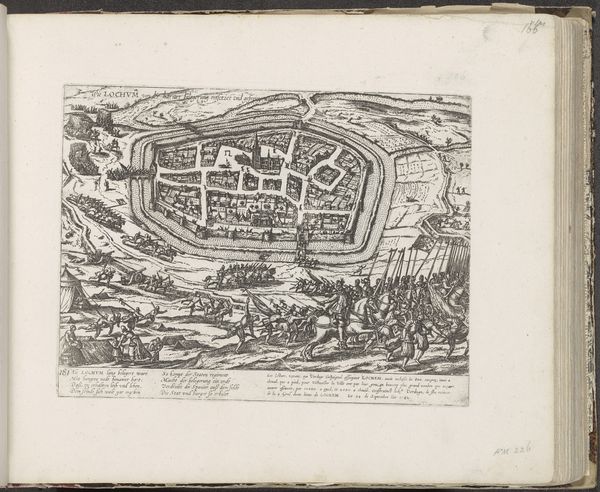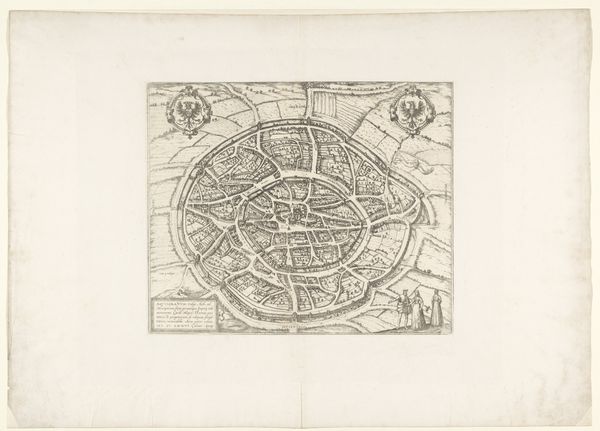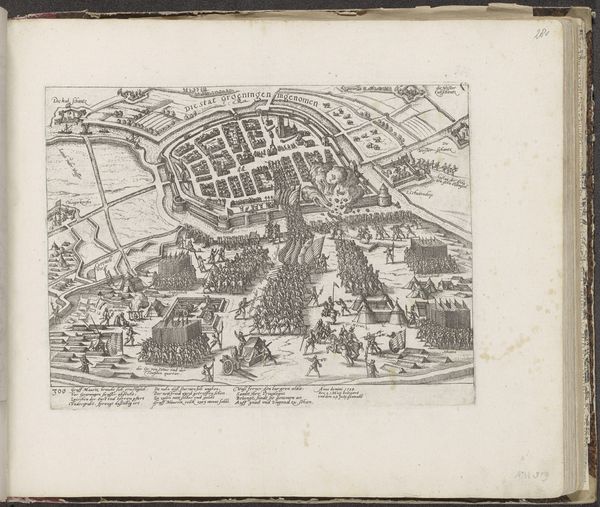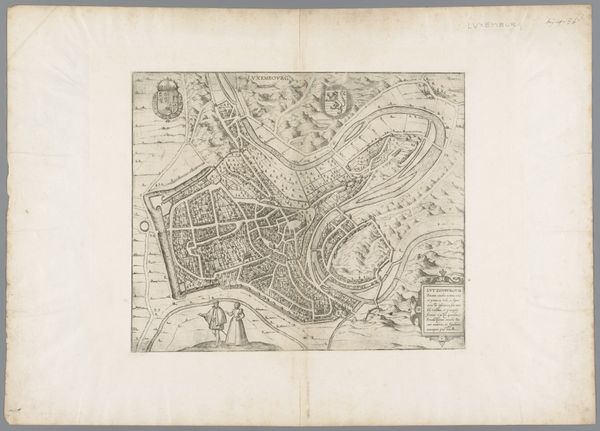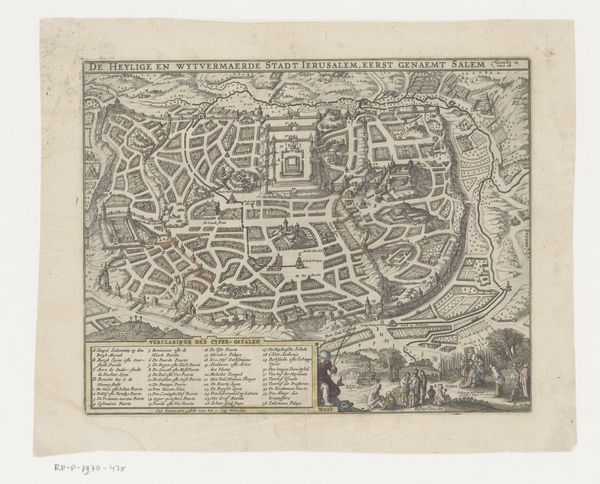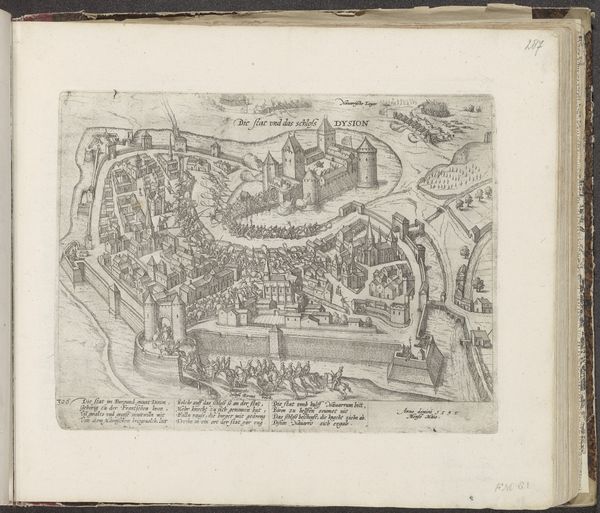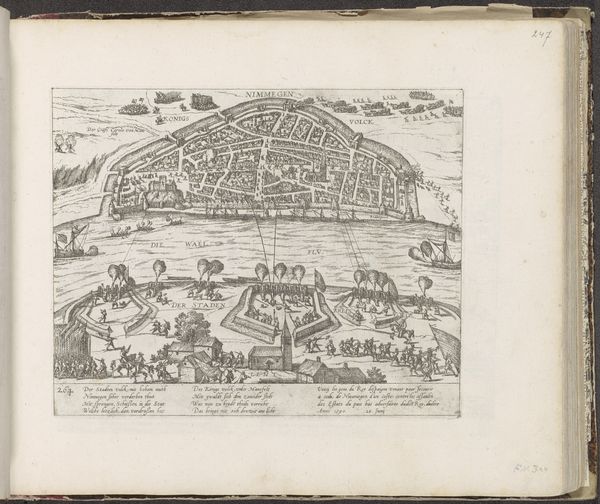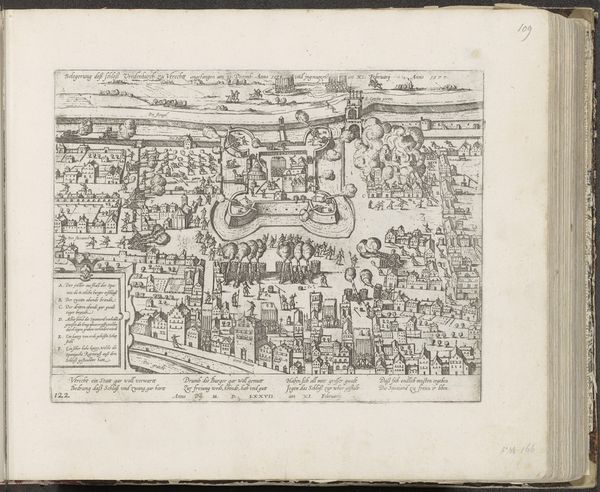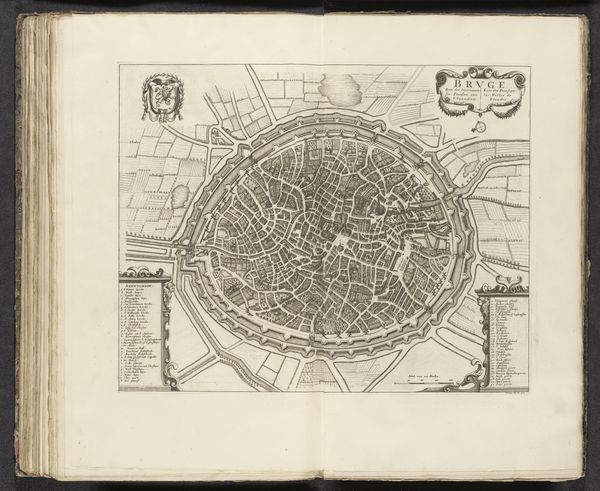
Parijs belegerd door Hendrik IV en ontzet door Parma, 1590 1590 - 1612
0:00
0:00
franshogenberg
Rijksmuseum
drawing, print, etching, paper, ink
#
drawing
#
aged paper
#
toned paper
# print
#
pen sketch
#
etching
#
sketch book
#
landscape
#
mannerism
#
paper
#
personal sketchbook
#
ink
#
geometric
#
pen-ink sketch
#
ink colored
#
pen work
#
sketchbook drawing
#
cityscape
#
history-painting
#
sketchbook art
#
realism
Dimensions: height 212 mm, width 283 mm
Copyright: Rijks Museum: Open Domain
Curator: Looking at this print, "Paris Beleaguered by Henry IV and Relieved by Parma, 1590," created sometime between 1590 and 1612, likely by Frans Hogenberg, the city almost pulses with a kind of contained anxiety, doesn't it? Editor: Indeed. The composition, primarily linear, directs the viewer's eye along the serpentine river towards the tightly packed urban space. It's a landscape dominated by geometric forms—circular city walls intersected by orthogonal street grids. The aged paper lends a sepia tone, enhancing the stark contrast created by the ink. Curator: Sepia tones and hard lines aside, the whole scene evokes the feeling of a game board just before someone makes a critical move. The meticulous rendering of the siege, almost miniature in scale, captures both the drama and the distance one might feel from historical events. Editor: Consider also how Hogenberg uses the conventions of Mannerism. The somewhat flattened perspective and exaggerated details—the river, for example, cleaving the city—speak to a deliberate departure from strict realism. Functionally, this provides clarity, emphasizing strategic locations and troop movements, not just aesthetic pleasure. Curator: Sure, sure, strategy! But the real weight of this piece is felt, not dissected. What about the human story buried in those tiny marks representing the soldiers and the citizens within the besieged city? A story of conflict rendered into almost abstract shapes! The pen and ink serve something far deeper. Editor: Perhaps. However, the materiality also serves as a record of technique and reproduction. Etching allowed for multiple impressions and wider distribution, serving perhaps not only the artistic impulse but informing and perhaps swaying public sentiment. Curator: So you’re suggesting Hogenberg, and the publisher of this piece, aimed at more than the formal arrangement of space and form! Perhaps it serves more like political rhetoric? Editor: Precisely. Every choice—from the composition to the inking—communicates historical agency and intended messages, even if perceived viscerally first. Curator: I see it, the cold calculation amidst the artistic presentation. Now, standing here considering it as more than ink and lines makes even this distant moment alive again. Editor: Yes, and maybe recognizing those combined facets and motivations are a path towards a comprehensive and responsible art history.
Comments
No comments
Be the first to comment and join the conversation on the ultimate creative platform.
